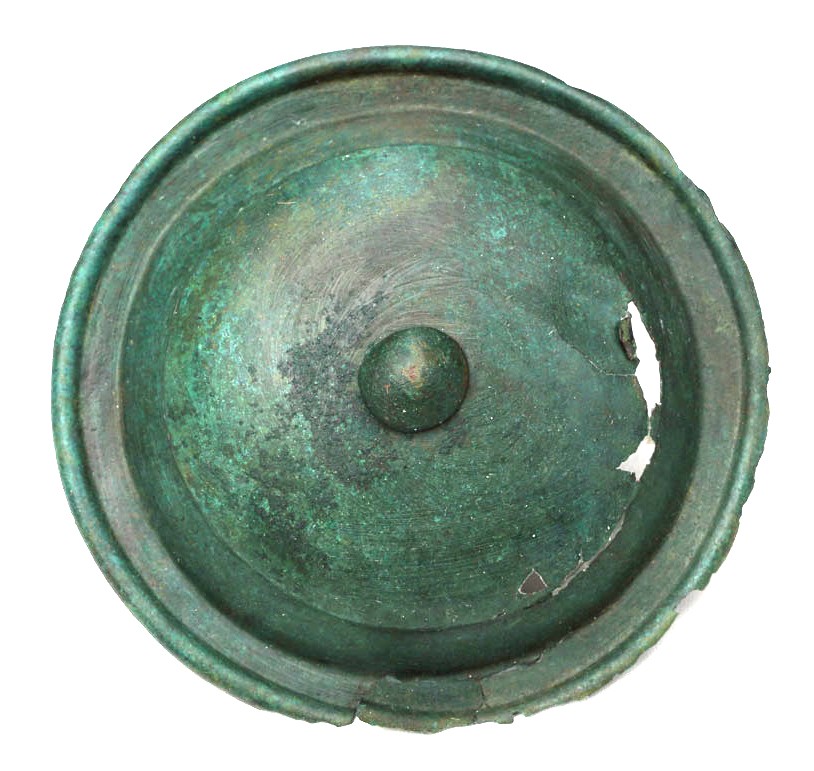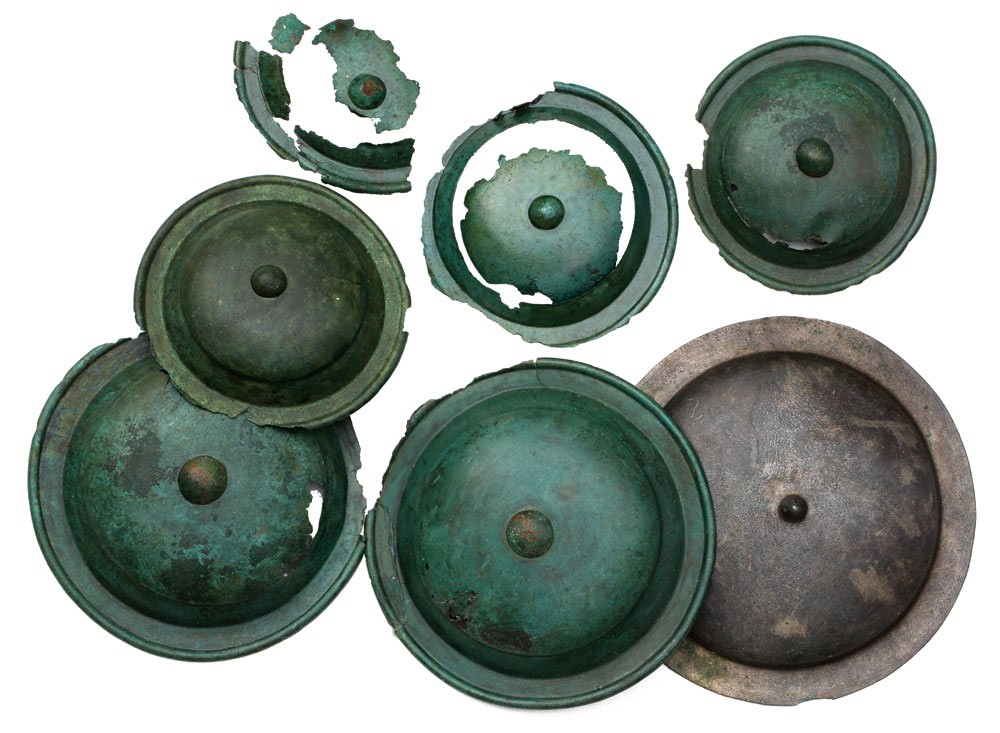
Brown tumour (shield) so-called "Phalere"
A bronze tumor (shield) so called "Phalere"
Dimensions: height 3.1 cm
Ø 11,2 cm
Chronology: Lusatian culture, 5th period of the Bronze Age (900-700 BCE)
Inv. number: MCh/A-421
The relic is one of seven nodules that are part of a Lusitanian bronze treasure discovered by accident in 2014 in Charzyki, Chojnice commune. The composition of the deposit can be described as sensational, as it contains 32 items unique for their richness, purpose and craftsmanship. The deposit includes tools, ornaments, elements of the horse row and harness (buttons, openwork fittings, thong splitters, buzzers) and weapons, including scrap metal.
The bronze tumour (shield) of the so-called "Phalere" was classified as the Stolzenburg-Skowarcz type (after the name of the towns where similar-looking specimens were discovered). The shield has a profiled, strongly convex dome with a characteristic fault. On top of it is a circular nodule used to fix a stem from underneath. On the inner side, a large mandrel was located, with the help of which the cusp was attached to the horse harness. The button has a wide and flat collar, profiled and thickened at the edge. The button has numerous traces of use - rubbing, dents and losses. The relic was cast from bronze (copper-tin alloy) in a special mould. The button is covered with a green noble patina.
The Stolzenburg-Skowarcz type tumour may have been used as a decorative element of a row for riding on horseback or as part of a harness for a harness drawn by at least two horses, such as battle wagons or light carts in cult processions associated with rituals in honour of the sun.
Range of occurrence - the zone from the Danish islands to the mouth of the Vistula, between the lower Vistula and Niemen rivers (mainly Sambia), west of the mouth of the Oder-Mecklenburg. Tumors of this type - undecorated, with a mandrel are characteristic of Pomerania, for the 5th period of the Bronze Age. Analogous specimens are known, for example, from the treasure from the so-called Mysia Island in Szczecinek, loco district; Witkow, Słupsk district; Rzyszczewo, Slawno district; Okonek, Złotów district.

